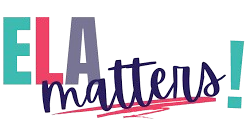They say two heads are better than one, so it stands to reason that students working in pairs or groups can yield greater learning outcomes than individual performance tasks. Learning from our peers is usually more memorable and impactful than traditional lecture style teaching, even for us as adults!
Before we assign writing tasks to our students, especially in new genres or formats, it is essential to first model the writing process or provide mentor texts to analyse. This is a crucial first step, but before we let our students set sail on their own writing journey, it can be beneficial, especially for struggling writers, to include time for collaborative writing as well! Here are five collaborative writing activities that can boost writing confidence.
#1 Writing a News Report From a Snapshot
After teaching the parts of a news report and modeling the form and style of this genre, a great way to reinforce understanding is to place your students into groups and provide each with a piece of chart paper with a photo glued or stapled near the top. If you’re teaching virtually, a collaborative slide with a photo placed on it will also do the trick. As a group, students must look at the photo and create a headline that could apply. After using markers to write their headline at the top of the paper, groups then work together to write the news report based on the title and picture. Printing off interesting photos from the Internet works for this activity, but it’s also fun to use photos from school events that students would be familiar with to help with background knowledge, and they also get a kick out of including their teachers or classmates in the article.
#2 Collaborative Found Poetry
A great way to hook students into the fun and wonder of poetry writing, is to facilitate collaborative Found Poetry! Provide students with an assortment of magazines and newspapers and ask them to flip through the pages and cut out any interesting words or phrases they find. Then students must work as a class or in teams to create a Found poem using the snippets. If students create a poem in teams, you can also decide on a theme that they must adhere to, and even a time limit to level up the competition vibes!
#3 Story Chains
A tried and true collaborative writing activity, story chains can be fun and silly, which means instant buy-in from your students, but you can also find ways to sneak in higher order critical and creative thinking skills. Story chains create a short story by passing the page to a new student after each line is written. The page gets folded down so that each student can only see the previous line and not the entire story. To enhance the experience, fill a jar with literary elements or poetic devices written on paper. Each time the page is passed to a new student, pull a paper from the jar and the student must incorporate that element or device into their added line. Students usually have a good laugh at the end, reading their story and seeing how it all came together.
#4 Opinion Writing Workshop
Opinion writing can be a tricky genre for students to master. It’s quite common for students to start with one opinion on a topic, only to flip flop and argue both sides of the issue by the end. To help reinforce the concept of writing cohesion and keeping a consistent opinion throughout a piece of writing, divide your class into two groups, with one side arguing one opinion on a topic and the other side arguing the opposing opinion. First, ask each side to brainstorm all of the reasons they can think of to support their opinion. Then, teams must choose three of the strongest points they brainstormed. Groups will then break into three sub-groups, each writing a supporting paragraph for one of the three points. Groups then come back together and review the paragraphs to help write an introduction and concluding paragraph. It may be helpful to provide students with a template for these sections. Finally, each side chooses a presenter or presenters to read their opinion paragraphs. Debrief after by discussing how each side maintained a cohesive focus in their writing and what students learned from this process.
#5 Procedural Sentence Sort
While learning procedural writing, a great way to help students identify and use transitional words and phrases is to provide them with a sentence sort. Divide students into groups and give each group a procedural paragraph cut up into individual sentences as well as transitional word strips. Students must work together to piece the sentences together in an order that makes the most sense and also use the transitional words to create the best flow in their paragraph. Groups can then give their paragraph a “How-To” title and present it to the class.

